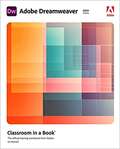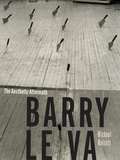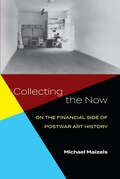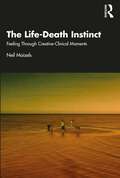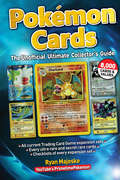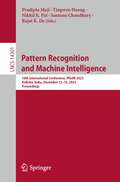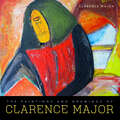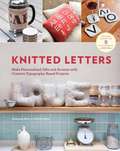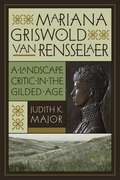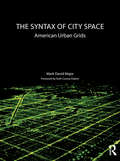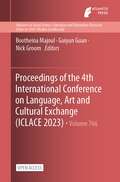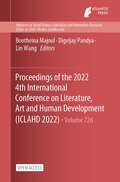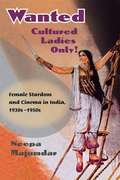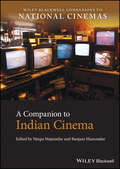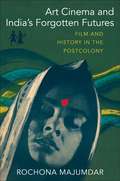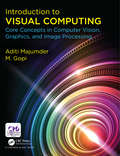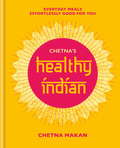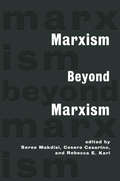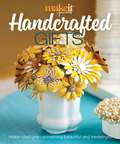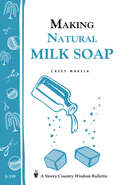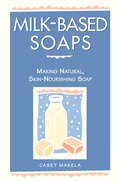- Table View
- List View
Adobe Dreamweaver (Classroom in a Book)
by James MaivaldClassroom in a Book®, the best-selling series of hands-on software training workbooks, offers what no other book or training program does -- an official training series from Adobe, developed with the support of Adobe product experts. <p><p> Adobe Dreamweaver Classroom in a Book (2021 release) contains lessons that cover the basics and beyond, providing countless tips and techniques to help you become more productive with the program. You can follow the book from start to finish or choose only those lessons that interest you.
Barry Le Va
by Michael MaizelsOf the conceptual artists who began their careers in the 1960s and 1970s--Bruce Nauman, Chris Burden, Vito Acconci, and Mel Bochner among them--Barry Le Va may be the most elusive. As this first study of his work reveals, his rigorously planned art was instigated to mask its creator's intentions and methods, presenting itself as an "aftermath" of modernism's claim to permanency and civil society's preferred mode of monumentalism.For Michael Maizels, Le Va's work constitutes a particularly productive subject of inquiry because it clearly articulates the interconnection between the avant-garde's distrust of autonomous art objects, two decades of social unrest, the emergence of information theory, and lingering notions of scientific objectivity. Barry Le Va: The Aesthetic Aftermath explores how Le Va used such materials as shattered glass, spent bullets, sound recordings, scattered flour, and meat cleavers embedded in a floor to challenge the interlocking assumptions behind blind faith in lasting beauty, just government, and perfectible knowledge. Taking inspiration from popular crime novels as well as contemporary art theory, Le Va charged his viewers to attempt, like detectives at a crime scene, to decipher an order underlying the apparent chaos.Le Va's installations were designed to erode not simply the presumed autonomy of the art object but also the economic and political authority of the art establishment. In his concluding chapter, Maizels looks at the more fixed work of the past two decades in which Le Va turned to architectural themes and cast concrete to probe the limits of dynamism and the idea of permanence.
Collecting the Now: On the Financial Side of Postwar Art History
by Michael MaizelsCollecting the Now offers a new, in-depth look at the economic forces and institutional actors that have shaped the outlines of postwar art history, with a particular focus on American art, 1960–1990. Working through four case studies, Michael Maizels illuminates how a set of dealers and patrons conditioned the iconic developments of this period: the profusions of pop art, the quixotic impossibility of land art, the dissemination of new media, and the speculation-fueled neo-expressionist painting of the 1980s. This book addresses a question of pivotal importance to a swath of art history that has already received substantial scholarly investigation. We now have a clear, nuanced understanding of why certain evolutions took place: why pop artists exploded the delimited parameters of aesthetic modernism, why land artists further strove against the object form itself, and why artists returned to (neo-)traditional painting in the 1980s. But remarkably elided by extant scholarship has been the question of how. How did conditions coalesce around pop so that its artists entered into museum collections, and scholarly analyses, at pace unprecedented in the prior history of art? How, when seeking to transcend the delimited gallery object, were land artists able to create monumental (and by extension, monumentally expensive), interventions in the extreme wilds of the Western deserts? And how did the esoteric objects of media art come eventually to scholarly attention in the sustained absence of academic interest or a private market? The answers to these questions lie in an exploration of the financial conditions and funding mechanisms through which these works were created, advertised, distributed, and preserved.
The Life-Death Instinct: Feeling Through Creative-Clinical Moments
by Neil MaizelsThroughout this enlightening collection, Neil Maizels considers the helical tandem between the Life Instinct and the Death drive in the light of canonical literary figures like Thomas Hardy, Patricia Highsmith, Sylvia Plath and Shakespeare, classic filmmakers like Hitchcock and contemporary television shows such as Curb Your Enthusiasm, The West Wing and Succession. This light is filtered through intricate clinical work whereby Maizels seeks to illustrate and expound on the strength and indefatigability of the Life Instinct. He makes a case for it as the relentless driver of integration and “binding” in the ever-growing, expansive psyche. He considers both Freud’s original equation of the Life Instinct with Eros and a widening interconnecting love of mankind, and Melanie Klein’s with gratitude and creative reparation. This book is a multi-layered presentation of the clinical and theoretical work of Neil Maizels as it has evolved and convolved over several decades. It places the feeling through of one’s conflicts at the heart of the mind’s generation of a unique identity, equipped to evolve its own unique form of creative spirit in the face of life’s most pressing psychological challenges: the limitation of time, and reciprocated beauty. The Life-Death Instinct: Feeling Through Creative-Clinical Moments is important reading for anyone seeking to expand their knowledge in this fascinating intersection of psychoanalysis and the arts.
Get Involved in an E-sports Club! (Join the Club)
by Christina MajaskiExcited about eSports? If so, an eSports club might be the right fit for you! Find out what it takes to join an eSports club or start your own, including information on membership, meetings, and activities. Together, you and your fellow members can participate, create, and most importantly, have fun. Take the plunge, join the club, and get involved!
Pokemon Cards: The Unofficial Ultimate Collector's Guide
by Ryan MajeskePokemon Palooza! How much is your childhood obsession with Charizard, Blastoise and Venusaur worth? Find out with Pokemon Cards: The Unofficial Ultimate Collector's Guide. Filled with 8,000 Trading Card Game cards and values, this must-have reference is packed with all 73 current TCG expansion sets, every ultra rare and secret rare cards (GX, EX, 1st Edition, and more) and checklists for every expansion set. Also included: expert tips for collecting and investing from the star of YouTube's PrimetimePokemon, author Ryan Majeske. Inside you'll discover TCG cards hotter than Charmander's flaming tail, including the rarest and most valuable card on the secondary market: a Pikachu illustrator card worth $54,000! Enjoy the thrill of the hunt, the memories and the excitement of the worldwide phenomenon that is Pokemon.
Pattern Recognition and Machine Intelligence: 10th International Conference, PReMI 2023, Kolkata, India, December 12–15, 2023, Proceedings (Lecture Notes in Computer Science #14301)
by Pradipta Maji Tingwen Huang Nikhil R. Pal Santanu Chaudhury Rajat K. DeThe LNCS volume constitutes the refereed proceedings of 10th International Conference, PReMI 2023, in Kolkata, India, in December 2023. The 91 full papers, presented together with abstracts of 6 keynote and invited talks, were carefully reviewed and selected from more than 300 submissions. The conference presents topics covering different aspects of pattern recognition and machine intelligence with real life state-of-the-art applications.
The Paintings and Drawings of Clarence Major
by Clarence MajorIn the first volume to collect the paintings and drawings of Clarence Major, readers are offered six decades of unique, colorful, and compelling canvases and works on paper—works of singular beauty and social relevance. These works represent Major’s personal painterly journey of passionate commitment to art.This generous selection of more than 150 paintings and drawings shows us the melding of rich ideas and fertile images, the braiding of imagination and motif. With their pleasing arrangement of elements, the works come vividly to life. Major often juxtaposes a decorative scheme with his own unique choice of color combinations, reinforced with rigorous brushstrokes that release chromatic energy. The paintings complement and challenge the great traditions of Realism, Impressionism, and Expressionism.Major is primarily a figurative and landscape painter. Here we find landscapes of singular vitality, rich in color and design, dramatic landscapes, and cityscapes representing, among other things, Major’s extensive travels in America and Europe. We are also treated to Major’s signature figurative work. In these paintings, he ventures fearlessly into familiar yet unexpected areas of richness.Also included is an introductory essay, “The Education of a Painter,” written by the artist, which further sheds light on and helps to lay a biographical, social, and historical foundation for this essential volume, reflecting a lifetime of serious commitment to painting at its best.
I Modify IKEA: Furnishings from Everyone's Favorite Store, Customized for Your Home
by Elyse Major Charlotte RiversCUSTOMIZE YOUR FAVORITE IKEA® HOME FURNISHINGS WITH DIY PROJECTS You love IKEA® for its affordable, high-quality home furnishings. Now thanks to this book&’s DIY decorating projects, you can easily transform those furnishings into fully customized decor. Packed with 200 step-by-step illustrations and instructions, I Modify IKEA® offers a range of inspiring ideas to reflect your unique style. Living room: appliqué pillows Dining room: a rolling bar cart Kitchen: embroidered dish towels Bedroom: decorated nightstands Closet: an adorable jewelry box Bathroom: unique shelving Kid's room: a box set dollhouse Office: a cozy reading bench.
Knitted Letters
by Erssie Major Catherine HirstThe über-popular craft of knitting meets the typography trend for the first time! Knitted Letters presents intarsia charts for 10 key font families--including roman, sans serif, italic, and poster--and outlines how to incorporate the letters into 30 stylish, infinitely customizable projects. Knitters will learn how to stitch personalized messages and monograms into pillows, scarves, throws, and more, and to create bold three-dimensional letters to display or give. With step-by-step instructions for upper- and lowercases, helpful charts and illustrations, and photos of all the gorgeous projects, knitters and typography enthusiasts alike will love crafting endless personalized lettered creations.
Mariana Griswold Van Rensselaer
by Judith K. MajorMariana Griswold Van Rensselaer (1851-1934) was one of the premier figures in landscape writing and design at the turn of the twentieth century, a moment when the amateur pursuit of gardening and the increasingly professionalized landscape design field were beginning to diverge. This intellectual biography--the first in-depth study of the versatile critic and author--reveals Van Rensselaer's vital role in this moment in the history of landscape architecture. Van Rensselaer was one of the new breed of American art and architecture critics, closely examining the nature of her profession and bringing a disciplined scholarship to the craft. She considered herself a professional, leading the effort among women in the Gilded Age to claim the titles of artist, architect, critic, historian, and journalist. Thanks to the resources of her wealthy mercantile family, she had been given a sophisticated European education almost unheard of for a woman of her time. Her close relationship with Frederick Law Olmsted influenced her ideas on landscape gardening, and her interest in botany and geology shaped the ideas upon which her philosophy and art criticism were based. She also studied the works of Charles Darwin, Alexander von Humboldt, Henry David Thoreau, and many other nineteenth-century scientists and nature writers, which influenced her general belief in the relationship between science and the imagination.Her cosmopolitan education and elevated social status gave her, much like her contemporary Edith Wharton, access to the homes and gardens of the upper classes. This allowed her to mingle with authors, artists, and affluent patrons of the arts and enabled her to write with familiarity about architecture and landscape design. Identifying over 330 previously unattributed editorials and unsigned articles authored by Van Rensselaer in the influential journal Garden and Forest--for which she was the sole female editorial voice--Judith Major offers insight into her ideas about the importance of botanical nomenclature, the similarities between landscape gardening and idealist painting, design in nature, and many other significant topics. Major's critical examination of Van Rensselaer's life and writings--which also includes selections from her correspondence--details not only her influential role in the creation of landscape architecture as a discipline but also her contribution to a broader public understanding of the arts in America.
The Syntax of City Space: American Urban Grids
by Mark David MajorMany people see American cities as a radical departure in the history of town planning because of their planned nature based on the geometrical division of the land. However, other cities of the world also began as planned towns with geometric layouts so American cities are not unique. Why did the regular grid come to so pervasively characterize American urbanism? Are American cities really so different? The Syntax of City Space: American Urban Grids by Mark David Major with Foreword by Ruth Conroy Dalton (co-editor of Take One Building) answers these questions and much more by exploring the urban morphology of American cities. It argues American cities do represent a radical departure in the history of town planning while, simultaneously, still being subject to the same processes linking the street network and function found in other types of cities around the world. A historical preference for regularity in town planning had a profound influence on American urbanism, which endures to this day.
Proceedings of the 4th International Conference on Language, Art and Cultural Exchange (Advances in Social Science, Education and Humanities Research #766)
by Bootheina Majoul Guiyun Guan Nick GroomThis is an open access book.The 4th International Conference on Language, Art and Cultural Exchange (ICLACE 2023) will be held on May 19–21, 2023 in Hangzhou, China. Culture includes language, which is a special cultural phenomenon. For culture, most scholars agree that it mainly includes two aspects: material culture and spiritual culture. Specific examples to show cultural phenomena will be of great benefit to our understanding. Some examples of material culture are listed here: Indian women wear saris, Japanese like to eat sashimi, and Chinese like to shake hands when meeting each other. These are various manifestations of material culture in different nations.Language is the mode of transmission of culture. Language is one of the most important ways of thinking and cultural exchange of human beings, which is actually the manifestation of the formation and transmission of culture. Because of thinking, human beings gradually create culture in the continuous social practice, and then spread their national culture to each other in the continuous language exchange.Since ancient times, art and culture have been going hand in hand and complementing each other. On the one hand, art is an important connotation and component of culture, and the progress of art is the driving force of cultural development. On the other hand, culture is the source and content of art, and the prosperity of culture is the key to improve the level of art. On the other hand, culture is the source and content of art, and the prosperity of culture is the key to improving the level of art. Therefore, whether it is culture or art, it is not only a symbol of an era, a representation of people’s life style, but also a guide to the direction of social development.The relationship between language, art and cultural communication is a hot topic for many scholars to study at present. Therefore, an academic conference is set up for authors to discuss related research issues and exchange new ideas, hoping that scholars can burst out more excellent and valuable ideas in this conference.ICLACE 2023 is to bring together innovative academics and industrial experts in the field of Literature, Art and Cultural Exchange research to a common forum. The primary goal of the conference is to provide a platform for scientists, scholars, and engineers from all over the world to present ongoing research activities, fostering the research and business relations and promoting scientific information interchange and cooperation between all the participants.
Proceedings of the 2022 4th International Conference on Literature, Art and Human Development (Advances in Social Science, Education and Humanities Research #726)
by Bootheina Majoul Digvijay Pandya Lin WangThis is an open access book.The 4th International Conference on Literature, Art and Human Development (ICLAHD 2022) was successfully held on October 28th-30th, 2022 in Xi’an, China (virtual conference). ICLAHD 2022 brought together academics and experts in the field of Literature, Art and Human Development research to a common forum, promoting research and developmental activities in related fields as well as scientific information interchange between researchers, developers, and engineers working all around the world.We were honored to have Assoc. Prof. Chew Fong Peng from University of Malaya, Malaysia to serve as our Conference Chair. The conference covered keynote speeches, oral presentations, and online Q&A discussion, attracting over 300 individuals. Firstly, keynote speakers were each allocated 30-45 minutes to hold their speeches. Then in the oral presentations, the excellent papers selected were presented by their authors in sequence.
Wanted Cultured Ladies Only!: Female Stardom and Cinema in India, 1930s-1950s
by Neepa MajumdarWanted Cultured Ladies Only! maps out the early culture of cinema stardom in India from its emergence in the silent era to the decade after Indian independence in the mid-twentieth century. Neepa Majumdar combines readings of specific films and stars with an analysis of the historical and cultural configurations that gave rise to distinctly Indian notions of celebrity. She argues that discussions of early cinematic stardom in India must be placed in the context of the general legitimizing discourse of colonial "improvement" that marked other civic and cultural spheres as well, and that "vernacular modernist" anxieties over the New Woman had limited resonance here. Rather, it was through emphatically nationalist discourses that Indian cinema found its model for modern female identities. Considering questions of spectatorship, gossip, popularity, and the dominance of a star-based production system, Majumdar details the rise of film stars such as Sulochana, Fearless Nadia, Lata Mangeshkar, and Nargis
A Companion to Indian Cinema (Wiley Blackwell Companions to National Cinemas)
by Neepa Majumdar Ranjani MazumdarA new collection in the Wiley Blackwell Companions to National Cinemas series, featuring the cinemas of India In A Companion to Indian Cinema, film scholars Neepa Majumdar and Ranjani Mazumdar along with 25 established and emerging scholars, deliver new research on contemporary and historical questions on Indian cinema. The collection considers Indian cinema&’s widespread presence both within and outside the country, and pays particular attention to regional cinemas such as Bhojpuri, Bengali, Malayalam, Manipuri, and Marathi. The volume also reflects on the changing dimensions of technology, aesthetics, and the archival impulse of film. The editors have included scholarship that discusses a range of films and film experiences that include commercial cinema, art cinema, and non-fiction film. Even as scholarship on earlier decades of Indian cinema is challenged by the absence of documentation and films, the innovative archival and field work in this Companion extends from cinema in early twentieth century India to a historicized engagement with new technologies and contemporary cinematic practices. There is a focus on production cultures and circulation, material cultures, media aesthetics, censorship, stardom, non-fiction practices, new technologies, and the transnational networks relevant to Indian cinema. Suitable for undergraduate and graduate students of film and media studies, South Asian studies, and history, A Companion to Indian Cinema is also an important new resource for scholars with an interest in the context and theoretical framework for the study of India&’s moving image cultures.
Art Cinema and India’s Forgotten Futures: Film and History in the Postcolony
by Rochona MajumdarThe project of Indian art cinema began in the years following independence in 1947, at once evoking the global reach of the term “art film” and speaking to the aspirations of the new nation-state. In this pioneering book, Rochona Majumdar examines key works of Indian art cinema to demonstrate how film emerged as a mode of doing history and that, in so doing, it anticipated some of the most influential insights of postcolonial thought.Majumdar details how filmmakers as well as a host of film societies and publications sought to foster a new cinematic culture for the new nation, fueled by enthusiasm for a future of progress and development. Good films would help make good citizens: art cinema would not only earn global prestige but also shape discerning individuals capable of exercising aesthetic and political judgment. During the 1960s, however, Satyajit Ray, Mrinal Sen, and Ritwik Ghatak—the leading figures of Indian art cinema—became disillusioned with the belief that film was integral to national development. Instead, Majumdar contends, their works captured the unresolvable contradictions of the postcolonial present, which pointed toward possible, yet unrealized futures.Analyzing the films of Ray, Sen, and Ghatak, and working through previously unexplored archives of film society publications, Majumdar offers a radical reinterpretation of Indian film history. Art Cinema and India’s Forgotten Futures offers sweeping new insights into film’s relationship with the postcolonial condition and its role in decolonial imaginations of the future.
Introduction to Visual Computing: Core Concepts in Computer Vision, Graphics, and Image Processing
by Aditi Majumder M. GopiIntroduction to Visual Computing: Core Concepts in Computer Vision, Graphics, and Image Processing covers the fundamental concepts of visual computing. Whereas past books have treated these concepts within the context of specific fields such as computer graphics, computer vision or image processing, this book offers a unified view of these core concepts, thereby providing a unified treatment of computational and mathematical methods for creating, capturing, analyzing and manipulating visual data (e.g. 2D images, 3D models). Fundamentals covered in the book include convolution, Fourier transform, filters, geometric transformations, epipolar geometry, 3D reconstruction, color and the image synthesis pipeline. The book is organized in four parts. The first part provides an exposure to different kinds of visual data (e.g. 2D images, videos and 3D geometry) and the core mathematical techniques that are required for their processing (e.g. interpolation and linear regression.) The second part of the book on Image Based Visual Computing deals with several fundamental techniques to process 2D images (e.g. convolution, spectral analysis and feature detection) and corresponds to the low level retinal image processing that happens in the eye in the human visual system pathway. The next part of the book on Geometric Visual Computing deals with the fundamental techniques used to combine the geometric information from multiple eyes creating a 3D interpretation of the object and world around us (e.g. transformations, projective and epipolar geometry, and 3D reconstruction). This corresponds to the higher level processing that happens in the brain combining information from both the eyes thereby helping us to navigate through the 3D world around us. The last two parts of the book cover Radiometric Visual Computing and Visual Content Synthesis. These parts focus on the fundamental techniques for processing information arising from the interaction of light with objects around us, as well as the fundamentals of creating virtual computer generated worlds that mimic all the processing presented in the prior sections. The book is written for a 16 week long semester course and can be used for both undergraduate and graduate teaching, as well as a reference for professionals.
The Capsule Wardrobe: 1,000 Outfits from 30 Pieces
by Wendy MakDe-clutter your closet, maximize your fashion choices, and reinvent your own personal style.Cluttered closets create cluttered lives. Too often we are left rummaging around an overflowing wardrobe, ironically at a loss for what to wear. However, owning a capsule wardrobe, which consists of a limited amount of clothing, will-believe it or not-set you free!The Capsule Wardrobe introduces thirty wardrobe essentials-tops, bottoms, footwear, and accessories-that will create the ultimate mix-and-match wardrobe for the working woman. Professional stylist Wendy Mak instructs readers on how to use different pieces together to achieve one thousand different unique looks from work to weekend. Learn to: Curate and build a true mix-and-match wardrobe Create unique everyday looks specific to body type Pick the right pieces to stretch your fashion dollar Transition from the office to after dark in a flash Reduce fashion mistakes and impulse buying And more!With detailed descriptions and illustrations of each of the thirty pieces, plus a list of all one thousand outfits in a handy table, The Capsule Wardrobe will revitalize the way you use your closet, make dressing easy and worry-free, and help you reinvent your personal style.
Chetna's Healthy Indian: Everyday family meals effortlessly good for you
by Chetna MakanWe all know there is more to Indian food than just curries; it can also be really healthy, fresh and super delicious. Chetna's Healthy Indian contains home cooking at its best - straightforward methods, very few ingredients, crowd pleasing flavours, nourishment and comfort. It draws upon inspiration from Chetna's family and friends, creating realistic recipes for midweek, after work, busy weekends or when you simply want to look after yourself with wholesome food.You'll find 80 delicious recipes that require minimum time and effort, including Onion & whole spice chicken curry, Tandoori pan-fried sea bream, Paneer & cavalo nero saag and Baked cardamom & pistachio yogurt pots.Inspired by Indian cuisine, Chetna's Healthy Indian is proof that healthy food does not need to be health food, and convenient meals can be good for you, too.
Chetna's Healthy Indian: Everyday family meals effortlessly good for you
by Chetna MakanWe all know there is more to Indian food than just curries; it can also be really healthy, fresh and super delicious. Chetna's Healthy Indian contains home cooking at its best - straightforward methods, very few ingredients, crowd pleasing flavours, nourishment and comfort. It draws upon inspiration from Chetna's family and friends, creating realistic recipes for midweek, after work, busy weekends or when you simply want to look after yourself with wholesome food.You'll find 80 delicious recipes that require minimum time and effort, including Onion & whole spice chicken curry, Tandoori pan-fried sea bream, Paneer & cavalo nero saag and Baked cardamom & pistachio yogurt pots.Inspired by Indian cuisine, Chetna's Healthy Indian is proof that healthy food does not need to be health food, and convenient meals can be good for you, too.
Marxism Beyond Marxism
by Saree Makdisi Cesare Casarino Rebecca E. KarlThese essays critically rethink Marxism in the light of the disintegration of communist regimes Eastern Europe and the Soviet Union. Containing essays from a group of internationally distinguished writers and intellectuals, this collection addresses Marxism as a cultural-political problematic. Contending that Marxism is deeply embedded in specific cultural practices, the contributors illuminate Marxism's contribution to discussions of labour in post-industrial capitalism, to controversies surrounding compulsory heterosexuality and queer theory, and to debates about the institutionalization and academicization of the "New" Left. In examining Marxism's relationship to cultural practices, the contributors make a case for Marxism's continued relevance. By combining a diversity of perspectives, these essays demonstrate that Marxism addresses urgent needs that are often forsaken by other political and ideological practices. They show how - now more than ever - Marxism's reaffirmation can serve as a sophisticated and cunning response to the latest global developments - and travesties.
Handcrafted Gifts: Make - and Give - Something Beautiful and Meaningful
by Make It Yourself MagazineHave you ever wanted to craft a gift for a friend or family member, but found you didn&’t have the time or even know where to start? Make It Yourself magazine presents Handmade Gifts, combining all the beautiful, handcrafted, and heartfelt offerings you could compile on Pinterest into one compact and approachable book. Handcrafted Gifts is packed with projects for makers of all types, skill levels, and tastes. After trying your hand at some of these enticing projects, you&’ll never want to give a gift certificate again! Giving someone a handmade gift shows that you put in more thought and effort than a purchased gift. Whether you want to make a wall hanging or a tiny terrarium, Handcrafted Gifts has more than 200 ideas and inspirations for everyone. Make It Yourself magazine serves the new generation of crafters captivated by Etsy and Pinterest, inspiring them to dabble in a variety of techniques. No matter how eagerly they may embrace technology, they proudly wear the badge of &“maker&”—someone who loves creating things by hand. Each of the projects in Handmade Gifts is presented with a finished image; step-by-step instructions, illustrations, and photos; and corresponding patterns where necessary. The look and feel of the book puts a fresh spin on traditional crafting with youthful, on-trend DIY fashion, accessories, and decor. With Handcrafted Gifts, you now have a simple, easy-to-follow guide to creating both simple and intricate mementoes for those you care about. sample projects include: Fabric & Sewing Denim Ruffle Necklace, Lace Pillow, Hammered Botanical Napkins Knitting, Crocheting & Weaving Knotted Key Ring, Hanging Baskets, Arm-Knit Cowl Paper, Wood & Leather Crepe Paper Wreath, Tissue Paper Lanterns, Wood Burned Coasters Painting & Stenciling Painted Plates, Painted Cocktail Glasses, Lace Crown Home Spa Treats Sugar Scrub, Salt Soak, Bath Fizzes Embroidery & Needlecraft Embroidered Table Cloth, Cross Stitch Tray, Embroidered Flower Art Clay, Glass & Resin Faux Mercury Glass, Leafy Votive, Etched Vase Plants, Bouquets & Mini Gardens Flower Letters, Living Wreath, Tiny Potted Plants Food Gifts Limoncello, Hot Chocolate Mix, Cookie Decorating Kit.
Making Natural Milk Soap: Storey's Country Wisdom Bulletin A-199
by Casey MakelaSince 1973, Storey's Country Wisdom Bulletins have offered practical, hands-on instructions designed to help readers master dozens of country living skills quickly and easily. There are now more than 170 titles in this series, and their remarkable popularity reflects the common desire of country and city dwellers alike to cultivate personal independence in everyday life.
Milk-Based Soaps: Making Natural, Skin-Nourishing Soap
by Casey MakelaCraft beautiful, sweet-smelling milk-based soaps safely and easily. In this fun and informative guide, Casey Makela shares her specialized techniques for producing lusciously creamy soaps. With straightforward instructions and thorough explanations, Makela teaches you how to fashion your own soaps from vegetable oils and tallow bases, giving dozens of suggestions for relaxing scents and specialty colors that will let your product shine. You’ll soon be creating enticingly unique soaps that will keep your glowing skin smelling and feeling good all day.
